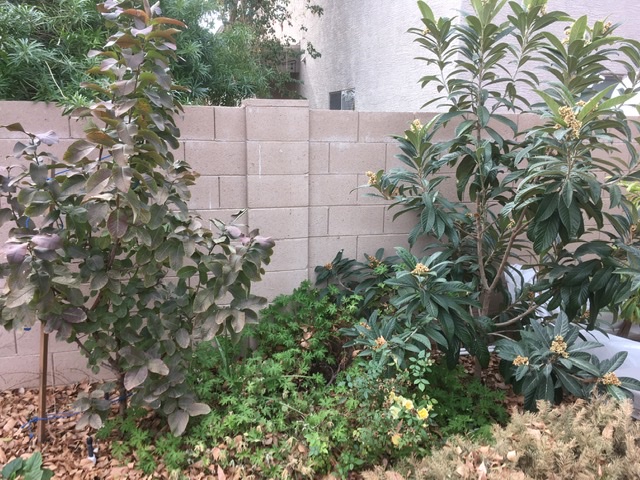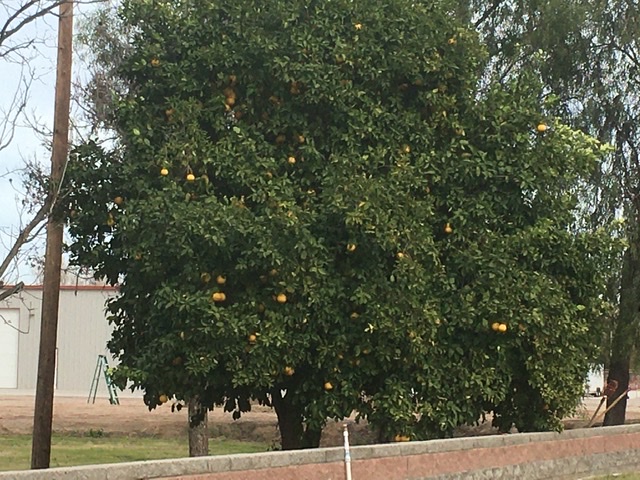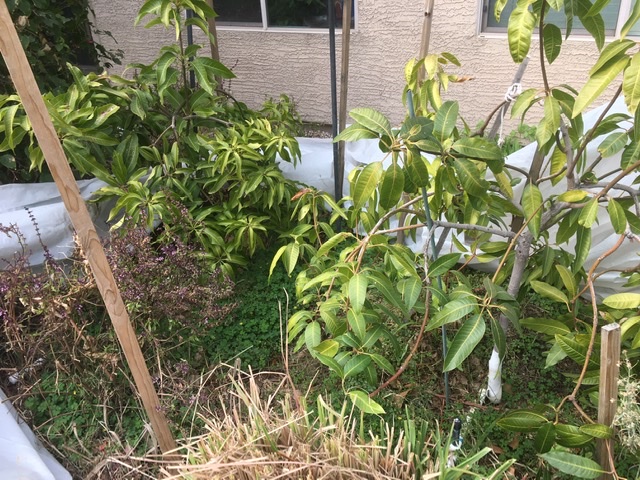How to Utilize High Density Planting the Right Way

High density planting has been a buzz term for urban backyard gardeners over the recent years. For those that long to grow multiple varieties of fruit trees, but don’t have acres of land at their disposal, planting fruit trees close together can be a great way to have your own backyard orchard.
There are a few things that should be taken into consideration when utilizing this planting technique.
What is high density planting? High density planting is simply a term used for planting fruit producing trees or plants in close proximity to allow for more varieties in a small space.
The typical suggested planting space requirements for fruit trees often are similar to what would be utilized in commercial orchards. While high density planting promotes planting in close proximity.
Check out this informative video from Dave Wilson’s Nursery:
The Pros of High Density Planting
For those of us that aren’t growing for commercial purposes, we turn to our backyards for growing. Much of the information found on growing a fruit tree provides planting information designed with the commercial grower in mind.
Commercial growers have acres of land to work with that often is not readily available to backyard growers. The goals for commercial growing drastically differ from those that are just trying to produce something for their families.
Here are a few of the reasons to consider high density planting.
Variety
One of the main benefits of high density planting is that you can plant multiple varieties in a small space. By planting fruit trees in close proximity, sometimes planting within the same hole, this allows for 2 or more trees to be planted in the same space as one large tree.
This allows the backyard fruit grower opportunities to sample different kinds of fruit. Click Here to find some spacing diagrams for planting from Dave Wilson’s Nursery.
Minimize Waste
I’m frequently driving around town and seeing mature citrus trees covered with fruit that the homeowner never bothered to harvest. In fact there are various agencies that go around cleaning off the excess fruit for the homeless or other causes.
Often times this excess fruit just sits on the tree to rot or waste. When you utilize the pruning methods for high density planting the goal is to keep trees smaller so they’re producing sufficient crops for your family’s needs.
Don’t worry you’ll still most likely have some to share with both your friends and the birds.

Self Sustainability
Many people live in urban settings with small yard space. In these types of environments, it’s hard to envision planting a massive fruit tree, but knowing that there are ways to keep fruit trees dwarf and manageable encourages more people to grow fruit trees.
Growing your own food sources helps encourage self-sustainability. Unfortunately natural disasters occur or food supplies can be adversely impacted, so everyone doing their part to grow edibles can reduce reliability on the grocery store.
Microclimate
If you want to learn more about what a microclimate is try my post: Importance of Microclimates for Backyard Gardening. When you plant certain fruit trees close together they can help support one another if planted correctly.
I garden in the Phoenix Arizona area which is growing zone 9b. This tends to be a marginal climate for growing subtropical or tropical types of plants since we get occasional light frosts.
A few degrees can make all the difference when planting frost sensitive plants and trees. Planting a frost sensitive fruit tree in the protection of a more frost tolerant tree can provide that extra warmth. Another example would be wind protection.
Ease of Harvest
When left to grow on their own, some fruit trees can exceed 25 feet tall. It can be a challenge to pick a piece of fruit that high up. By keeping your fruit trees small and manageable it doesn’t require ladders or devices, you can simply reach and grab.
Things you need to Consider

High density planting sounds great, right? Well, it is, but I’ve definitely found some things to consider when you utilize this planting strategy.
Too Much Shade
Over time, your fruit trees will begin to fill out and create a dense foliage canopy. Some fruit trees need more sunlight than others. An area may have seemed great when you planted the tree initially, but that can diminish over time with ongoing planting and growth.
I have a navel orange tree that gets a fair amount of sun, but I can tell it would appreciate a bit more. The spot I planted in was behind a few other fruit trees that are more vigorous growers.
So it’s critical to have a plan with the end in mind before you start your backyard orchard.
It Takes Work
For those that have a lot of real estate to work with the traditional method of digging a hole, planting a tree, and then just making sure it’s watered and fertilized is the recipe for success.
With high density planting, all that remains relevant, but it also takes diligent pruning methods throughout the year to keep the trees shaped properly and remaining the appropriate size.
It’s easy to get lazy or be nervous about whether you are pruning right and then your fruit tree begins to grow out of control.
Too Many Trees
This piggybacks off of the too much work sentiment. Like many other gardeners I know, when you discover that you can grow more, you tend to buy more.
It’s exhilarating buying a fruit tree and you start dreaming of all the fruit you’ll be enjoying which leads to buying more. After this initial jolt wears off, it becomes time to maintain everything over the years which can be a lot for some.
I write a humorous post on signs that you’re a fruit tree addict that you may find enjoyable by clicking here.
In this video I show you some of the things I’m doing with high density planting in my backyard garden and how you can take advantage of this planting method.
All in all, the pros far outweigh the cons when it comes to high density fruit tree planting. With a basic understanding of what to do and what not to do, you’ll soon be harvesting a plethora of fruit for your family to enjoy.
